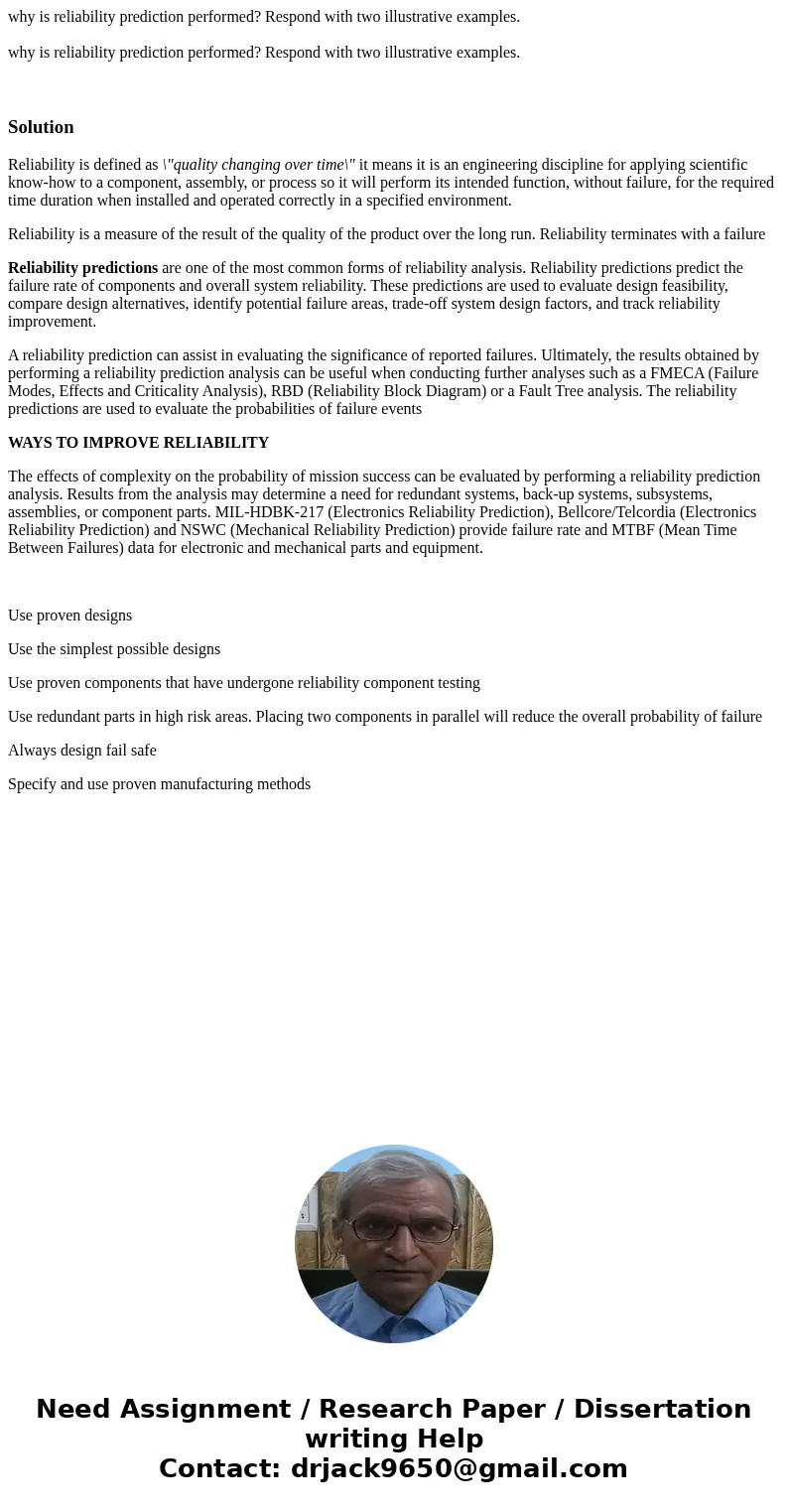why is reliability prediction performed Respond with two ill
Solution
Reliability is defined as \"quality changing over time\" it means it is an engineering discipline for applying scientific know-how to a component, assembly, or process so it will perform its intended function, without failure, for the required time duration when installed and operated correctly in a specified environment.
Reliability is a measure of the result of the quality of the product over the long run. Reliability terminates with a failure
Reliability predictions are one of the most common forms of reliability analysis. Reliability predictions predict the failure rate of components and overall system reliability. These predictions are used to evaluate design feasibility, compare design alternatives, identify potential failure areas, trade-off system design factors, and track reliability improvement.
A reliability prediction can assist in evaluating the significance of reported failures. Ultimately, the results obtained by performing a reliability prediction analysis can be useful when conducting further analyses such as a FMECA (Failure Modes, Effects and Criticality Analysis), RBD (Reliability Block Diagram) or a Fault Tree analysis. The reliability predictions are used to evaluate the probabilities of failure events
WAYS TO IMPROVE RELIABILITY
The effects of complexity on the probability of mission success can be evaluated by performing a reliability prediction analysis. Results from the analysis may determine a need for redundant systems, back-up systems, subsystems, assemblies, or component parts. MIL-HDBK-217 (Electronics Reliability Prediction), Bellcore/Telcordia (Electronics Reliability Prediction) and NSWC (Mechanical Reliability Prediction) provide failure rate and MTBF (Mean Time Between Failures) data for electronic and mechanical parts and equipment.
Use proven designs
Use the simplest possible designs
Use proven components that have undergone reliability component testing
Use redundant parts in high risk areas. Placing two components in parallel will reduce the overall probability of failure
Always design fail safe
Specify and use proven manufacturing methods

 Homework Sourse
Homework Sourse